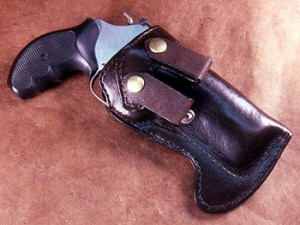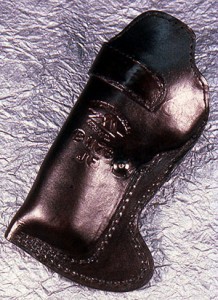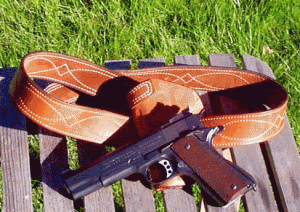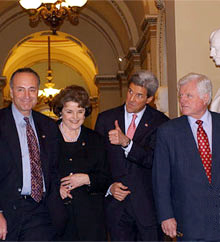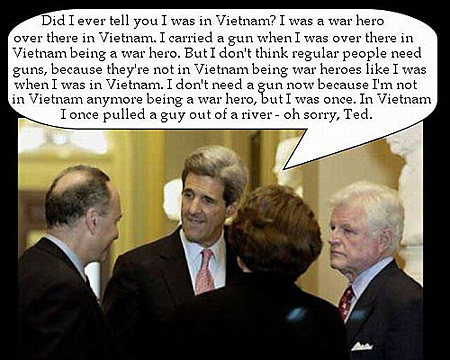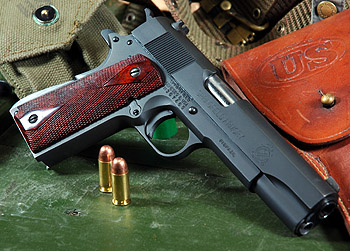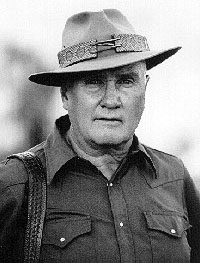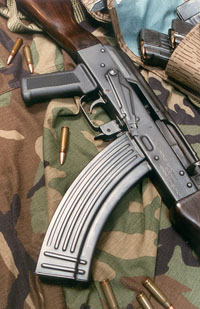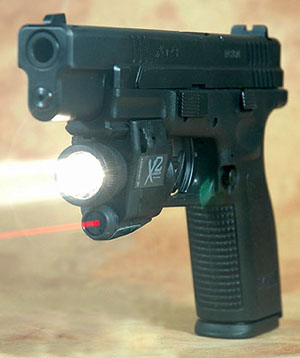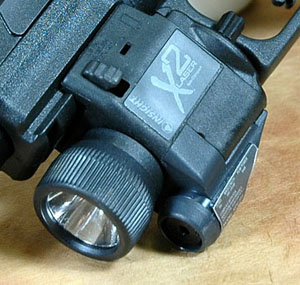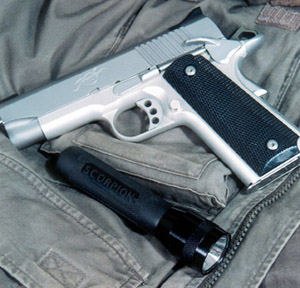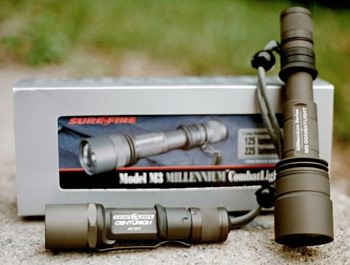By Dave Kopel [From America’s First Freedom, July 2003]
Banning handguns, the gun prohibition lobbies accurately recognize, is not politically feasible to accomplish all at once. Accordingly, the lobbies often focus on measures which set the stage for moving towards near-prohibition in incremental steps. In pushing for pre-prohibition measures, the lobbies work hard to select measures which superficially seem to affect only a small minority of gun owners-so as to keep the tens of millions of gun owning American families on the political sidelines. Yet the pre-prohibition bills often have enormous implications for all gun owners. Among the most clever anti-gun proposals, expertly created to exploit the divide-and-conquer strategy, is the campaign for “one handgun a month laws.”
These gun rationing laws help lay the foundation for broader restrictions in two important ways. First, the laws set the precedent that the government can quantitatively limit the exercise of firearms rights, based on the government’s determination that an individual does not “need” to exercise the right so much.
Once the gun rationing principle is established, the time period can be changed to limit gun purchases to two per year, or two per lifetime, or none per lifetime, based on the government’s determination that people do not need any more guns.
In Great Britain, for example, the police enforce the rifle licensing laws so that a hunter who has a rifle in a particular caliber may never acquire a second rifle in that caliber, since he does not “need” the second gun.
In the U.S. Congress, the first formal efforts to impose gun rationing came in the late 1970s and early 1980s, Sen. Edward Kennedy (D-Mass.) and Rep. Peter Rodino (D-N.J.)(then-Chairman of the House Judiciary Committee) proposed a handgun licensing law which would, among other things, allow the purchase of no more than two handguns per year. As evidence of the anti-gun lobbies’ increasing sophistication in taking incremental steps, the lobbies apparently recognized that the Kennedy “two per year” proposal was too restrictive to be politically realistic as a first step. Accordingly, in 1993, then-Rep. Robert G. Torricelli (D-N.J.) introduced “The Multiple Handgun Transfer Prohibition Act of 1993.” The bill would have made it a federal crime to buy more than one handgun in a thirty day period. Currently, the leading “one per month” advocate in Congress is Senator Charles Schumer (D-N.Y.).
The second way in which gun rationing sets the stage for more controls stems from the fact that gun rationing is difficult to implement without gun registration. Only if the state maintains a computerized list of gun buyers for at least 30 days after each purchase can the state tell if a person purchased more than one gun at retail. Only if private gun sales (e.g., buying a gun from a relative or a friend who is not a licensed gun dealer) are prohibited can the state be sure that the individual is not exceeding the rationing limit. Thus, for advocates of gun registration, gun rationing is a good first step, because it helps to create a “need” for registration and for prohibiting private transfers.
Gun registration, in turn, makes gun confiscation much easier to accomplish-as residents of California, New York City, Great Britain, Canada, and Australia have already discovered, with registration lists in those jurisdictions being used for confiscations of a variety of handguns and long guns.
In the United States, the first regulations on multiple handgun purchases appeared after enactment of the Gun Control Act of 1968. Although the Act itself said nothing about multiple purchases, the new Bureau of Alcohol, Tobacco and Firearms (BATF) created regulations for “Multiple Purchase Reporting Forms.” Whenever a federally-licensed firearms dealer sold more than one handgun to an individual in a thirty-day period, the dealer had to send the Multiple Purchase Reporting form to BATF.
BATF did nothing with most of the forms that it received. Thus, when John Hinckley legally bought two handguns from a Texas firearms dealer one day in early 1980, the dealer sent a Multiple Purchase Form to BATF.
Neither a BATF investigation based on the Multiple Purchase Form, nor the future “Brady Act” would have prevented Hinckley’s purchases. His only criminal conviction was for a misdemeanor; his mental health records were private; and although the address on his Texas drivers license was no longer correct, he was a Texas resident, and legally allowed to buy guns anywhere in Texas.
The BATF regulation for the Multiple Purchase Form was codified in the Firearms Owners’ Protection Act of 1986. (Volume 18 of the U.S. Code, section 923(g)(3).) The 1994 the Clinton crime bill mandated that the Multiple Purchase Form also be sent to the local chief of police or sheriff. In recent years, Chicago Mayor Richard Daley has been attempting to use the federal Freedom of Information Act in order to obtain every Multiple Purchase Form in BATF’s custody. This would be a gross violation of the privacy rights of law-abiding gun owners. Commendably, the BATF fought Daley all the way to the Supreme Court, and just before the Court was scheduled to hear the case in March 2003, Congress enacted an appropriations rider specifically forbidding the Bureau of Alcohol, Tobacco, Firearms and Explosives (its new name as a result from the Homeland Security government reorganization) from spending any money to divulge the private information in the Multiple Purchase Forms.
The first state to impose explicit gun rationing was South Carolina. (New York State’s 1911 Sullivan Law requires police permission for handgun purchases, and in some jurisdictions, such as New York City, handgun purchase authorizations are frequently forbidden under the theory that the applicant does not “need” another handgun.)
South Carolina’s legislature acted after a 1975 a television network news report claimed that South Carolina was the main source of handguns for New York City street crime. In response, the South Carolina legislature passed a law allowing only one handgun purchase in a thirty day period.
Next came Virginia. Efforts to pass a one-handgun-a-month law in Virginia had floundered for years, until Democratic Governor Douglas Wilder made gun rationing his top priority for 1993. Wilder said that “The surest way to stop the number of guns available for illegal sale is to place limits on the numbers that can be purchased legally.”
In support of the proposal, Governor Wilder sent every legislator a copy of a recent issue of “Batman” comics, which apparently had been written in order to assist the anti-gun cause in Virginia. In the Batman episode, Virginia was portrayed as the main gun-running state in the east. One character complained that tough gun laws had not been enacted “because some fat white bastard wants to play with his guns on a weekend.”
The writers made Batman himself endorse total gun prohibition, claiming that violence “will end when we decide that we don’t want guns in our houses, in our neighborhoods, in our schools, in our hands. It will end when we decide to get rid of the guns we have and not get more.” Like many advocates of gun rationing, the Batman writers saw gun rationing as merely a step along the path towards eliminating all guns.
According to Batman, non-Virginians traveled to Virginia, purchased multiple handguns, and then took them back to Gotham City to sell on the black market. Ever since the Gun Control Act of 1968 (which banned handgun purchases outside one’s state of residence), such purchases were federal felonies, with especially strict penalties for trafficking of multiple handguns. (The statutes are found in volume 18 of the U.S. Code, sections 922(a)(1) & (5), 924(b).)
Besides the comic book, the other major evidence used to portray Virginia as the main source of New York City crime guns was Project Lead, a BATF firearms tracing operation. According to anti-gun advocates, Project Lead showed that 41% of New York crime guns came from Virginia.
Project Lead had traced 6% of the firearms recovered by New York City police in 1991 and 1992 (1,231 of the 13,382 recovered firearms). Of firearms found at the scenes of violent crimes in New York City, 32 (17% of traced violent crime guns) had been originally sold at retail in Virginia. Of these 32 guns, three guns originally sold in Virginia were found at homicide scenes.
Project Lead was unable to determine whether traced firearms had been stolen from the original buyer, or how they had entered New York City. Most of the Virginia guns appeared to have been associated with non-violent crimes, including violations of New York City’s near-prohibitory handgun licensing ordinances.
After an intense legislative struggle, the normally pro-gun Virginia legislature enacted a law making it a misdemeanor of persons (other than licensed firearms dealers) to purchase more than one handgun in a 30 day period. The law contained provisions for persons to obtain waivers if the multiple purchase was part of a collection (e.g., the purchase of a pair of matched pistols), for bulk purchases from estates sales, if a person’s guns had been lost or stolen, or for similar reasons.
Perhaps the decisive factor in Governor Wilder’s success was convincing the Virginia business community, especially in Richmond, that the absence of a gun rationing law was nationally embarrassing to Virginia.
In that same legislative session, the Virginia legislature required proof of residence for driver’s license applicants, thus making it harder for out-of-staters to unlawfully buy guns in Virginia.
After the victory in Virginia, Handgun Control, Inc. (originally known as the National Council to Control Handguns, and later renamed the Brady Campaign), pushed very hard for gun rationing in other states. Intense lobbying in Delaware has come close, but has not yet succeeded. Maryland enacted gun rationing in 1996 after extensive legislative arm-twisting by Governor Parris Glendenning and Lt. Governor Kathleen Kennedy Townsend.
California followed suit in 1999, as a direct result of the Columbine school murders. A key legislator who had opposed gun rationing announced that he was switching his vote because of Columbine. The logical connection between the California one-handgun-a-month law and Columbine was tenuous, since the Columbine killers had used only a single handgun (plus three long guns), in a murder spree that had been planned for over a year.
But in the post-Columbine atmosphere, the logic of particular anti-gun laws was less relevant than the atmosphere of hatred and panic incited by prohibitionists such as Rosie O’Donnell and President Clinton. Congress appeared to be ready to pass a national gun rationing bill, although NRA lobbying managed to turn the tide sufficiently so that the bill was never brought to a formal vote.
What has been accomplished by gun rationing laws? In 1995, Captain R. Lewis Vass, of Department of State Police, testified to a Virginia crime commission that the gun rationing law had “not significantly affected … the number of multiple handgun purchases within the Commonwealth.” According to Captain Vass, 95% of applications for multiple handgun purchases are approved.
The laws’ main benefit is supposed to be reducing interstate gun trafficking, rather than as controlling local crime. Certainly South Carolina achieved no crime reduction for itself with the 1975 law, as the state’s already high crime rate violent crime rate more than doubled over the next two decades.
A 1996 gun trace study conducted by Handgun Control, Inc., researcher Douglas Weil, found that after the Virginia law was enacted, the number of guns traced to a group of four southeastern states including Virginia declined. (D.S. Weil & R.C. Knox, “Effects of Limiting Handgun Purchases on Interstate Transfer of Firearms,” 275 JAMA 1759-1761.)
But study that same year by the office of Rep. Charles Schumer (simply reporting the results of BATF gun traces) found that Virginia and South Carolina were two of the three states which supplied the most guns to New York. (Office of Rep. Charles Schumer, “War Between the States: How Gunrunners Weapons Across America.”)
If the Schumer study is correct, then the South Carolina and Virginia laws were miserable failures, since gun rationing failed to change the status of either state as a prime source of illegal guns for New York. A pair of journal articles which I have authored (and which are cited at the end of this article) argue that neither the Weil study nor the Schumer study are reliable, since they both depend on BATF trace statistics, but BATF firearms traces involve only a small and unrepresentative sample of crime guns.
The conventional wisdom in Virginia was summed up by a pair of newspaper headlines. In 1992, the Richmond Times-Dispatch announced: “Virginia gun-running is ’embarrassment’.” In 1998, an article by the same author was headlined, “Virginia Gun Limit has Enthusiastic Following: But State Still Ranks High as Weapon Source.”
It should not be surprising that there is so little evidence for the effectiveness of gun rationing laws, since there are several better programs in place which help prevent the purchase of guns for illegal interstate trafficking. The BATFE’s Multiple Purchase Reporting Forms already alert BATFE about every multiple handgun sale, and BATFE can use these forms to focus on genuinely suspicious transactions (such as repeated large quantity purchases of firearms by an individual). The National Shooting Sports Foundation runs a firearms dealer education program which helps dealers detect “straw purchasers” who may be acting as a surrogate of for someone who is legally barred from gun ownership. And of course every single retail purchase of any kind of firearm requires prior authorization from the FBI or its state equivalent, under the National Instant Check System.
As soon as the 1993 Virginia gun rationing law was enacted, anti-gun lobbyists began to push for similar legislation in West Virginia. They did not succeed statewide, but did win an ordinance in Charleston. Charleston law, however, was erased when the legislature passed a law making the existing statewide firearms preemption statute (banning local anti-gun laws) even more explicit and comprehensive.
Now, the original gun rationing law, the South Carolina statute, may also be headed for the ash heap of failed restrictions on civil liberty. As this article is written in early April, the South Carolina House of Representatives has voted to repeal the state’s gun rationing law, and Governor Mark Sanford has voiced his support for repeal.
This would not be the first time that South Carolina’s legislature has acted to undo civil liberties restrictions from the past. Following the assassination of President William McKinley by an anarchist, South Carolina in 1902 banned pistol sales to anyone except sheriffs and “special deputies” (e.g., Klansmen, company goons, and similar insiders). In 1966, the South Carolina legislature forthrightly acknowledged that the law restricting civil rights was wrong, and the pistol ban was repealed.
While the debate about gun rationing often focus on empirical issues, civil rights attorney Stephen Halbrook believes that empirical data are irrelevant when constitutional rights are at stake. In a 1993 article for West Virginia Law Review (www.saf.org/LawReviews/Halbrook2.htm ), Halbrook asked:
“May a constitutional right be limited by a legislature’s determination of whether, to what extent, or how many times within a given time period a person has a ‘need’ to exercise that right? Would it be consistent with the freedom of the press, for instance, to make it a crime to purchase more than one Bible. . .each month? Who, other than dealers in books, really ‘needs’ more than one such book per month?… it could hardly be argued that the Sixth Amendment right to the assistance of counsel in criminal cases would not be violated if crime decreased as a result of not allowing an accused person to consult with counsel more than once each month. A bill of rights guarantee cannot be disregarded under the guise that its existence contributes to increases in crime or that its absence would make it harder to extract confessions.. . .The essence of a bill of rights is that the issue of whether a person ‘needs’ to do a protected act is removed from legislative proscription.”
This is why the gun rationing issue is so important to every gun owner-including the woman who owns just one rifle and has no plans to ever buy a second gun. Gun rationing is one of the tools being used to eliminate firearms ownership as a human right which belongs to all law-abiding American citizens, and to replace that right with a government-granted privilege which can be exercised no more frequently than the government decides there is a need.
This article is based in part on Kopel’s entry on One-Gun-per-Month Laws for Guns in American Society: An Encyclopedia of History Politics and Law (ABC-Clio, 2002), for which Kopel served on the Editorial Board. For more on gun tracing and its relation to gun rationing, see David B. Kopel & Paul H. Blackman (NRA Research Coordinator), “Firearms Tracing Data from the Bureau of Alcohol, Tobacco and Firearms: An Occasionally Useful Law Enforcement Tool, but a Poor Research Tool,” 11 Criminal Justice Policy Review 44 (Mar. 2000); David B. Kopel, “Clueless: The Misuse of BATF Firearms Tracing Data,” 1999 Law Review of Michigan State University Detroit College of Law Review 171, www.davekopel.com/2A/LawRev/CluelessBATFtracing.htm
This article, from the Independence Institute staff, fellows and research network, is offered for your use at no charge. Independence Feature Syndicate articles are published for educational purposes only, and the authors speak for themselves. Nothing written here is to be construed as necessarily representing the views of the Independence Institute or as an attempt to influence any election or legislative action.
Please send comments to Editorial Coordinator, Independence Institute, 14142 Denver West Pkwy., suite 185, Golden, CO 80401 Phone 303-279-6536 (fax) 303-279-4176 (email) [email protected]
